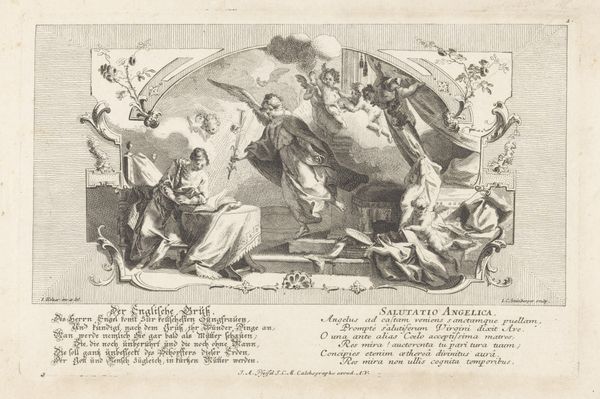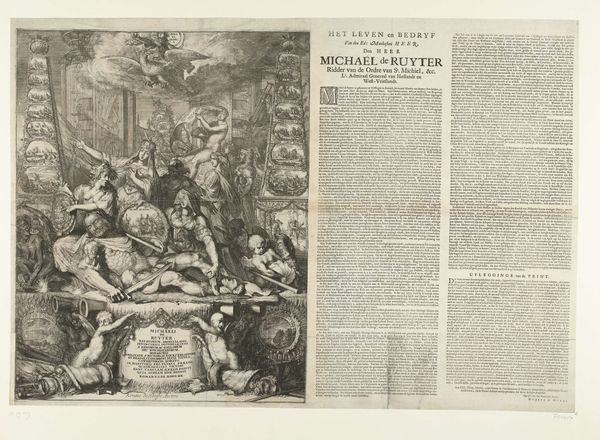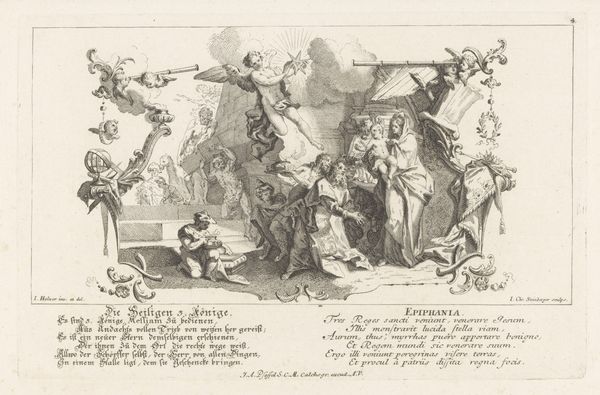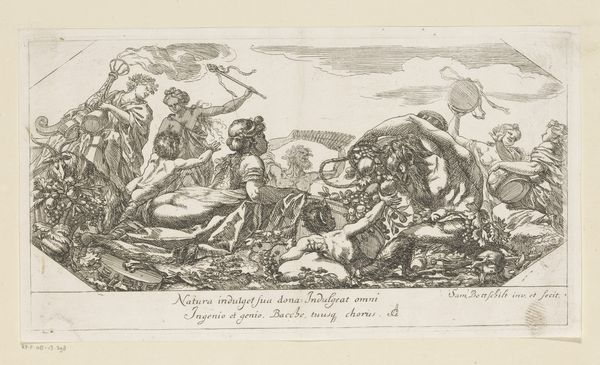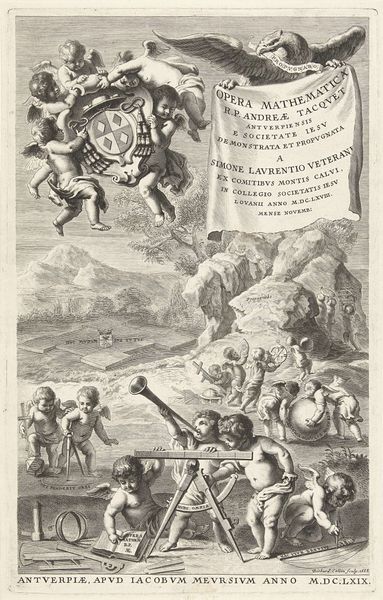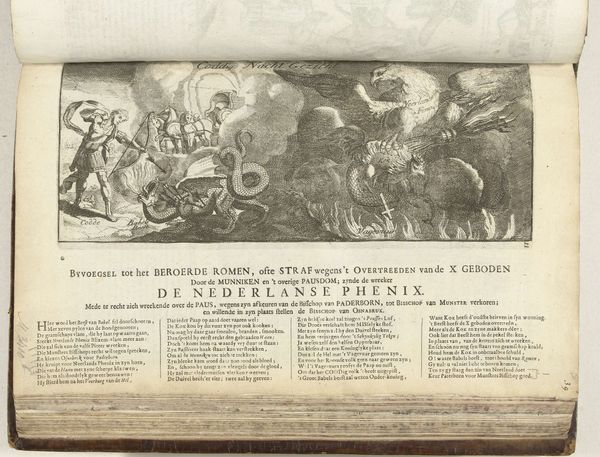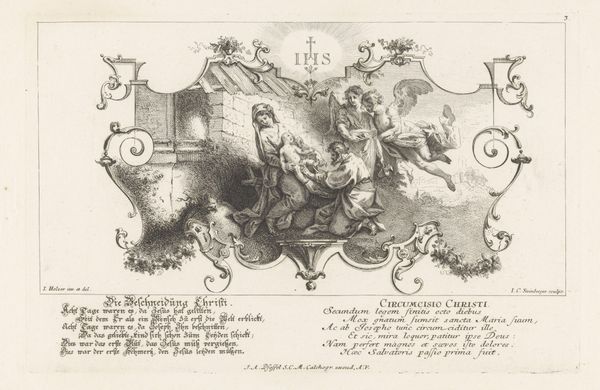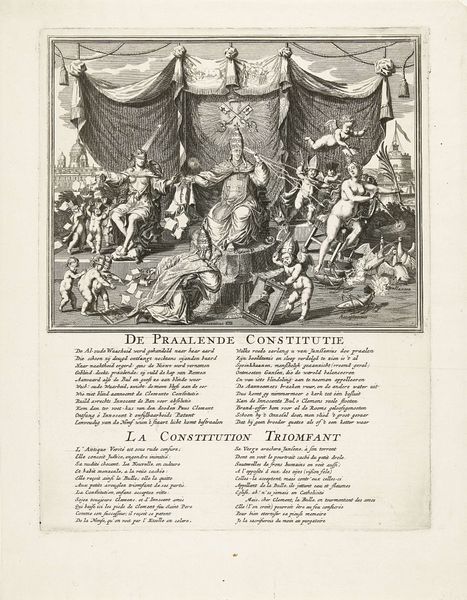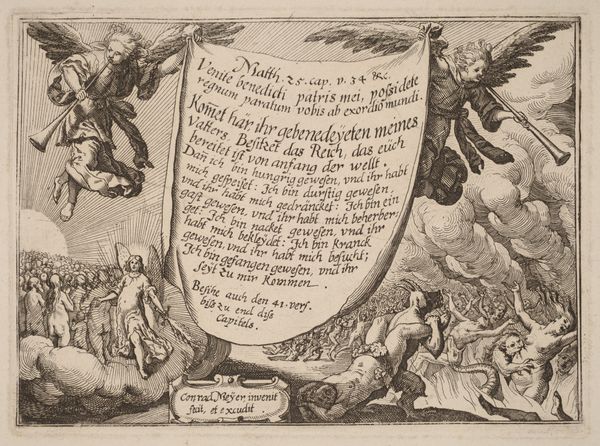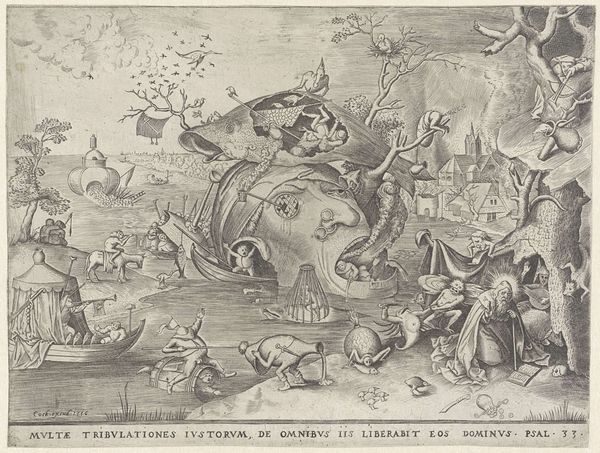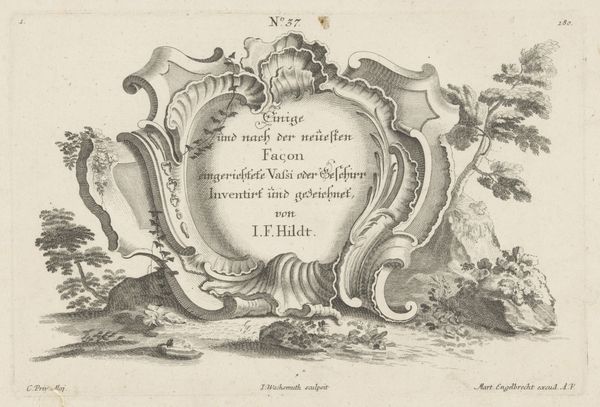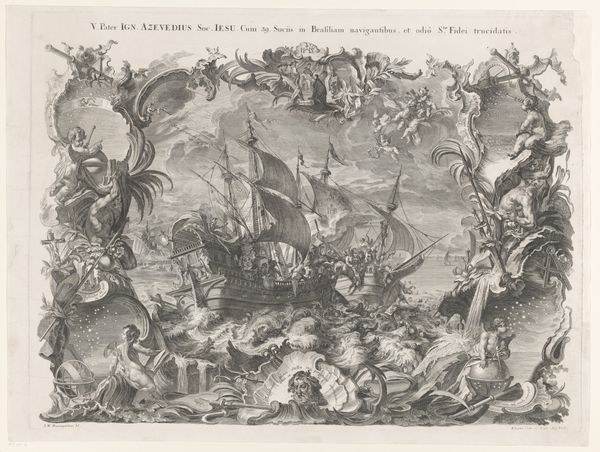
print, engraving
#
allegory
#
baroque
# print
#
engraving
Dimensions: height 200 mm, width 285 mm
Copyright: Rijks Museum: Open Domain
Editor: This is "Coddig Nacht Gezicht," which translates to "Shameful Night Vision", a print, an engraving, by Carel Allard from approximately 1705. It is visually dense, with lots of strange mythical creatures and harsh lighting, which gives it a rather unsettling quality. How do you interpret this work? Curator: What strikes me immediately is the layering of symbols. Allard uses potent images to critique the political and religious landscape of his time. For example, what do you make of the figure shooting arrows on the left? Editor: He seems to be attacking the dragon, maybe? Is he a hero of some sort? Curator: He's a symbolic representation of the Protestant forces fighting against what Allard considered the tyranny of the Catholic Church. The dragon, or sea monster, embodies chaos and deceit, often associated with heretical forces during that era. Notice how an eagle descends on a serpent intertwined in flames to the right side. These symbolic creatures carry a psychological weight over time; How do these figures help frame the intent of the broader narrative? Editor: So, the phoenix rising symbolizes hope and renewal for the Dutch Republic after overcoming this period of upheaval? And the cross falling into the fire symbolizes a rejection of Catholic authority? Curator: Precisely! It's a powerful statement, utilizing recognizable allegorical forms to convey a complex political and religious message. Consider how cultural memory shapes our understanding of these symbols, even today. Editor: It's fascinating how visual symbols become shorthand for complex ideas. It gives me so much to think about! Curator: Indeed, and exploring these connections reveals the enduring power of images to communicate across centuries.
Comments
No comments
Be the first to comment and join the conversation on the ultimate creative platform.
